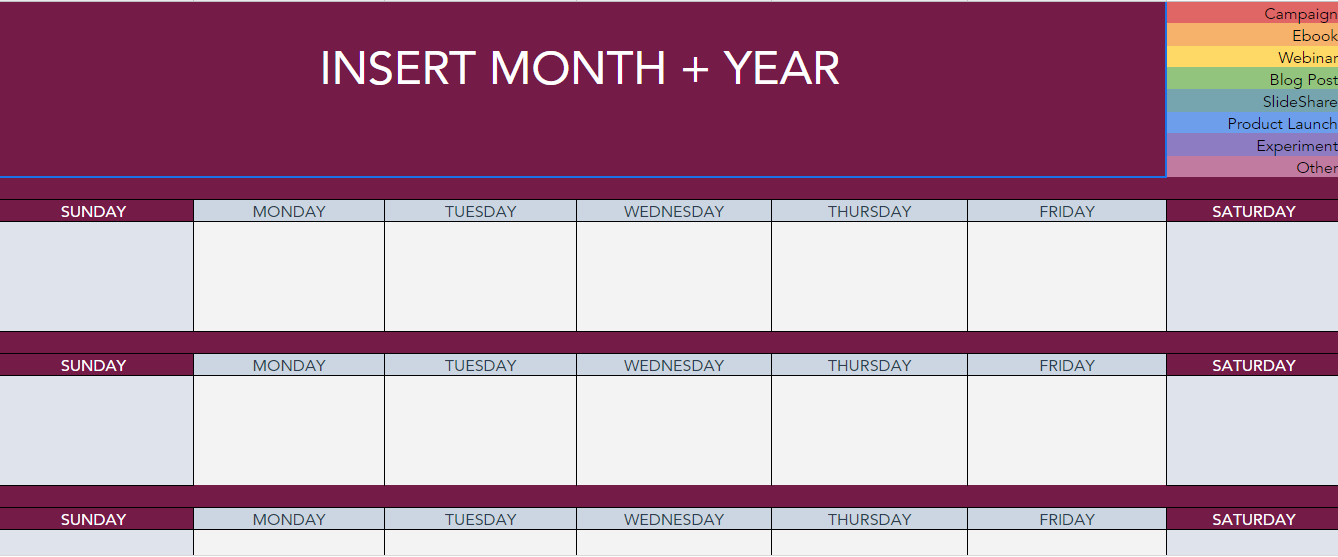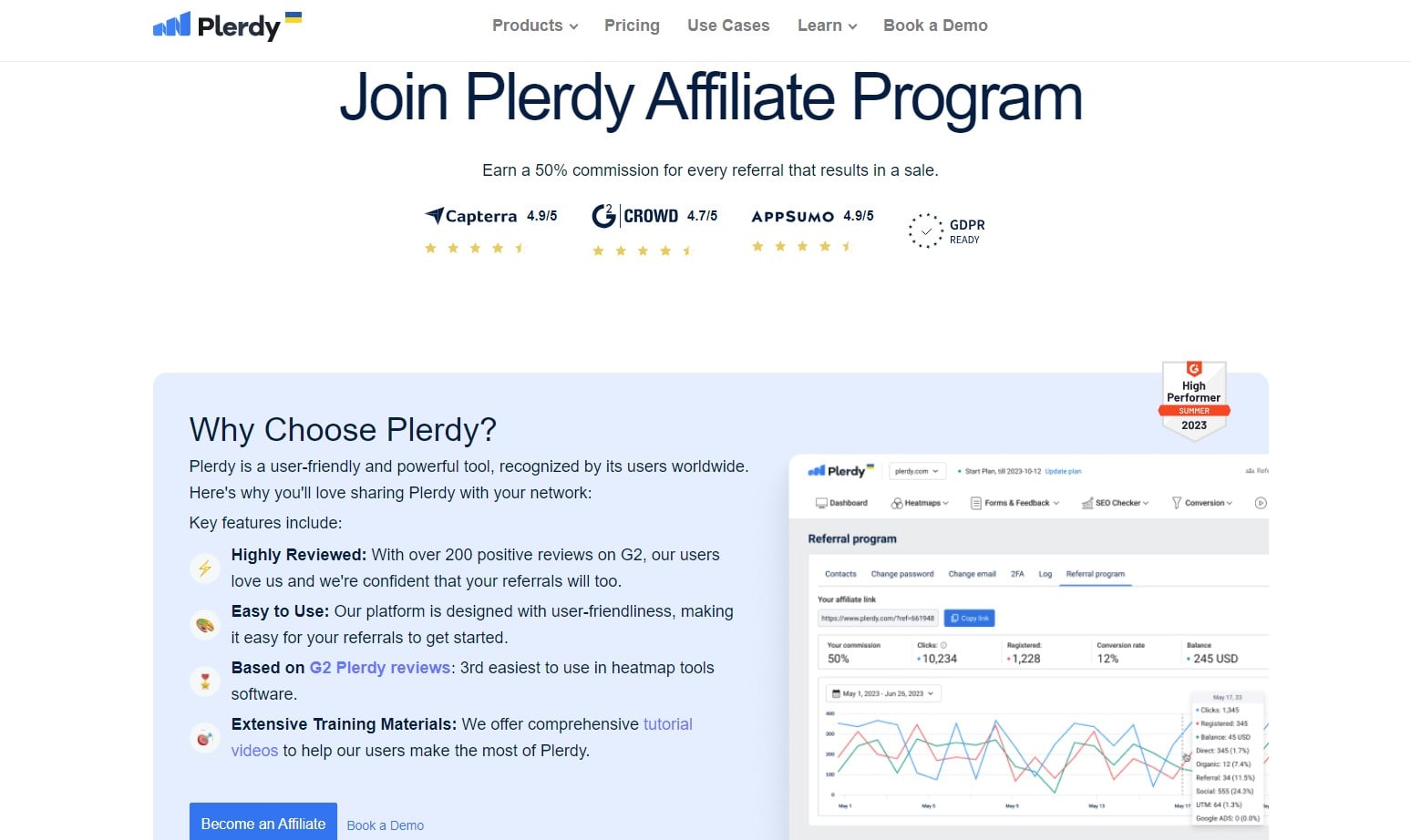In the bustling sphere of commerce, a robust marketing plan stands as the linchpin to amplify a product’s footprint. Delve into our curated list that illuminates the 10 paramount types of marketing planning, each meticulously crafted to propel your venture forward:
- Strategic blueprinting
- Target audience mapping
- Competitive analysis
- Channel optimization
- ROI forecasting

Harnessing these tactics, brands can pinpoint the finest channels and tailor their approach, ensuring they stand out in the crowd. And if you’re keen on refining your online user journey – consider integrating Plerdy, a stellar tool for CRO & UX. With marketing constantly evolving, it’s crucial to stay updated, ensuring your plan remains resilient and results-driven. Dive in, explore our selection, and gear up to make waves in the marketplace⚡?
What Is a Marketing Plan
A marketing plan maps out a clear pathway for a brand’s journey. It’s a blueprint that breaks down how a product will find its way into the hands and hearts of consumers. Through meticulous research and analysis, this plan provides insights into your target audience’s preferences, behaviors, and habits.
Elements of a Comprehensive Marketing Plan:
- Target Audience Analysis: Pinpoint who your product speaks to. For instance, eco-friendly beauty brands might target environmentally-conscious millennials.
- Competitive Review: Understand where you stand amidst competitors. For example, an athletic wear brand might analyze how they compare to big names like Nike or Adidas.
- SWOT Analysis: Identify strengths, weaknesses, opportunities, and threats.
- Marketing Budget Allocation: Determine where to invest resources, be it digital advertising or influencer partnerships.
- Measurement & Feedback: Lay out a strategy to gauge success, like tracking sales spikes after launching an ad campaign.
With a well-crafted marketing plan, brands can sidestep potential pitfalls, optimize opportunities, and establish a solid presence in their respective niches. Whether launching an organic food line targeting health enthusiasts or rolling out tech gadgets aimed at Gen Z, understanding your audience and market dynamics is paramount. A marketing plan doesn’t just spotlight a product; it crafts a compelling story, paving a route to success and guiding a brand’s every move. Remember, in the bustling marketplace, a robust plan doesn’t just guide—it leads.
Understanding Marketing Plans

Diving into the heart of business strategy, a marketing plan serves as the compass directing every brand move. This detailed roadmap outlines how a product will navigate its journey from creation to consumer. By harnessing invaluable insights into consumer behavior and industry trends, it crafts an actionable strategy tailored to resonate.
Core Components of a Stellar Marketing Plan:
- Audience Insight: Recognize your product’s core consumer. An artisanal coffee brand, for example, might zoom in on urban coffee aficionados.
- Positioning Marketing Strategy: Carve out a distinct spot in the market. A luxury watch brand could set itself apart by emphasizing heritage and craftsmanship.
- Marketing Channel Selection: Decide on the platforms that best amplify the product’s voice, from Instagram for a chic fashion label to LinkedIn for a B2B software solution.
- Resource Allocation: Plot out investments, whether they flow into captivating content creation or digital ad blitzes.
- Performance Marketing Metrics: Designate benchmarks and KPIs to measure the plan’s effectiveness, such as tracking website traffic post-content release.
Harnessing the power of a well-designed marketing plan propels brands beyond potential hurdles, tapping into golden opportunities. Whether it’s an innovative tech gadget aiming for tech-savvy millennials or a sustainable clothing line appealing to eco-conscious consumers, clarity on your target and market dynamics remains crucial. An effective marketing plan doesn’t merely highlight a product—it weaves an enthralling narrative, charting a course for brand success, ensuring each step stays firmly on track. In today’s fast-paced commercial landscape, a comprehensive plan doesn’t merely suggest—it commands.
List of 10 Best Types of Marketing Plans
Navigating the labyrinth of marketing strategies can be a Herculean task, but a well-curated list of the “10 best types of marketing planning” serves as an invaluable compass. From guerrilla marketing tactics that inject creativity into product promotion, to tried-and-true methods like content marketing that build lasting customer relationships, such a compilation provides a tactical smorgasbord for any savvy marketer. With the rapid evolution of consumer behavior, it’s crucial to possess an agile plan that synthesizes multiple facets of marketing, lest your strategies grow stale and ineffective.
1. Content Marketing Planning

Content marketing planning is the art of crafting a narrative around a product, laying out a roadmap that captivates and converts audiences. It’s not just about churning out content—it’s about telling a product’s story in ways that resonate.
Pillars of Robust Content Marketing Planning:
- Audience-Centric Approach: For a luxury watch brand, diving into the lifestyle and aspirations of affluent consumers provides content direction.
- Diverse Marketing Content Types: A skincare line might incorporate how-to videos, blog posts about skin health, and user-generated testimonials.
- Engagement Metrics: For a sustainable fashion label, tracking shares and comments can unveil the type of content that truly strikes a chord.
- Marketing Platform Strategy: A children’s educational toy brand, for example, might lean heavily into visual platforms like Pinterest or Instagram.
- Feedback Integration: Brands, like an organic snack company, can evolve their content strategy by tuning into consumer feedback loops.
Tying marketing and product seamlessly, content marketing planning ensures that every piece of content not only showcases the product but also aligns with the brand’s overarching strategy. Whether it’s for a cutting-edge tech gadget that promises enhanced connectivity or an artisanal tea brand steeped in tradition, the right content captures the essence and delivers it effectively. In the dynamic digital landscape, a well-orchestrated content marketing plan does more than inform—it enthralls, ensuring each piece of content is a chapter in a product’s riveting tale. In the world of marketing, content isn’t just king—it’s the entire kingdom.
2. Digital Marketing Planning
Digital marketing planning illuminates the pathway for brands to engage with audiences in the vast online universe. By intricately weaving a product’s narrative with digital channels, this strategy maximizes visibility and conversion.
Critical Elements of Digital Marketing Planning:
- Marketing Platform Proficiency: For a health app, tapping into wellness forums and fitness influencers on Instagram might be key.
- Marketing Content Diversity: An artisanal chocolate brand might juggle blog posts on cocoa sourcing with mouthwatering GIFs of melting chocolate.
- Engagement Marketing Tracking: A tech startup, rolling out an AI home assistant, would closely monitor clicks, shares, and online reviews to refine their digital pitch.
- Marketing Ad Campaigns: A budding e-commerce fashion house might invest in retargeting ads to recapture those who browsed but didn’t buy.
- Feedback Looping: A subscription-based book club would tweak their email campaigns based on open rates and feedback, ensuring subscribers eagerly await every mailer.
In the vast digital expanse, carving a niche requires a stellar digital marketing plan that seamlessly ties the product’s appeal to the right audience at the right time. Whether it’s an eco-friendly sneaker brand advocating for a greener planet or a cloud service making remote work a breeze, a well-tuned digital strategy amplifies the product’s voice, turning the vast web into a home turf. In the marketing dance, digital planning choreographs every move, ensuring that brands don’t just step into the digital spotlight—they own it. In the online narrative, a potent digital marketing plan turns brands into legends.
3. Social Media Marketing Planning

In today’s digital age, social media marketing planning isn’t just an option—it’s a necessity. This strategy allows brands to engage with their audience where they hang out most, turning casual scrolling into productive engagement.
Essentials of Social Media Marketing Planning:
- Marketing Platform Prioritization: A boutique coffee brand might find its tribe on Instagram with aesthetic brew shots, while a financial planning app might thrive on LinkedIn.
- Content Marketing Tailoring: An organic skincare line might mix DIY face mask tutorials with customer testimonials, striking the right balance between value and promotion.
- Engagement Metrics: An up-and-coming musician would zoom in on comments, shares, and playlist adds to gauge song popularity.
- Influencer Marketing Collaboration: An adventure gear brand could team up with travel vloggers, ensuring their backpacks appear on every mountain summit.
- Feedback Channeling: A gourmet pizza delivery might modify toppings based on the trends and preferences voiced on their Twitter polls.
By synchronizing marketing strategies with social media trends, brands turn their product stories into online sensations. Consider a home decor brand using Pinterest mood boards to showcase their line, or a tech firm utilizing TikTok to demonstrate their latest gadget in action. Every update to a product’s social media accounts is like a new chapter in the book. Effective social media marketing planning ensures that brands not only join the conversation but often lead it. In a space where clicks transition to sales, and shares morph into brand advocacy, a meticulously charted social media plan positions brands not as mere participants but as digital trailblazers.
4. Influencer Marketing Planning
Influencer marketing planning revolutionizes the way brands speak to their audience. Gone are the days of impersonal ads—today, trusted influencers serve as the bridge between a product’s potential and its audience.
Cornerstones of Influencer Marketing Planning:
- Right Fit: A gourmet tea brand doesn’t just need a celebrity—they need a tea enthusiast. That food blogger with a morning tea ritual? Perfect match.
- Engagement Levels: For a sustainable clothing brand, an eco-activist with high audience interaction trumps a fashionista with mere likes.
- Content Marketing Collaboration: A children’s book publisher might brainstorm with a parenting influencer, leading to bedtime reading live sessions.
- Outcome Metrics: A fitness equipment brand might delve into conversion rates post influencer workouts, adjusting strategy for maximum impact.
- Marketing Budget Allocation: High-end luxury watches could allocate more for a YouTube horologist than a Snapchat trendsetter.
Harnessing influencer power means ensuring the product narrative resonates with authenticity. Consider the edge a tech startup gets when a renowned tech reviewer unboxes and dives deep into their latest gadget. Or how a cruelty-free makeup brand elevates its ethos when a vegan beauty influencer showcases a stunning transformation using their line.
In the vast digital marketplace, an influencer doesn’t just endorse—they incorporate the product into their personal narrative, making it relatable, desirable, and trustworthy. The magic of influencer marketing planning lies in creating symbiotic relationships: influencers get fresh content, and brands attain genuine advocacy. In this nuanced dance of marketing, products are not just sold—they’re celebrated. And brands? They don’t merely advertise—they inspire.
5. Event and Experiential Marketing Planning

Event and experiential marketing planning pushes brands into the limelight, forging unforgettable connections between a product and its audience. Rather than just talk about benefits, this strategy lets customers live them, turning everyday engagements into immersive experiences.
Pillars of Exceptional Experiential Marketing:
- Tailored Events: A skincare brand might host a spa day, letting customers dive into the luxury of their range.
- Interactive Displays: A tech firm could set up hands-on stations, allowing consumers to get up-close and personal with the latest gadgets.
- Personal Touchpoints: A gourmet chocolate manufacturer might host tasting sessions, paired with stories of sourcing ethically.
- Feedback Loops: A sportswear company could run a marathon and later gather insights on shoe comfort from participating runners.
- Memorable Takeaways: For a new perfume launch, scented bookmarks or postcards act as reminders long after the event winds down.
Imagine walking into an eco-friendly resort promotion, where the ambiance, set with chirping birds and forest mists, transports you to serene woodlands. Or stepping into a time machine at a historical novel release, complete with period costumes and ballroom dances. These aren’t mere events; they’re stories where the product plays a central role.
Experiential marketing planning thrives on creativity, pulling consumers into a brand’s universe. Here, products evolve from mere items on a shelf to experiences that touch the heart, fostering loyalty and deep-rooted connections. With each event, brands don’t just market—they enchant, captivating audiences in ways traditional advertising can only dream of.
6. Mobile Marketing Planning
Mobile marketing planning takes center stage in an era where smartphones act as extensions of ourselves. This strategic approach aims to reach potential customers right at their fingertips, making brand interactions personal and instantaneous. Through nimble strategies, marketers embrace the dynamic nature of mobile users, ensuring that the product message seamlessly integrates into their daily digital journey.
Strategies that Drive Mobile Engagement:
- Geo-targeted Promotions: A local bakery might send out push notifications about a fresh batch of croissants to those nearby.
- App-based Loyalty Programs: Think of a coffee shop rewarding you with points every time you place an order through their app.
- Interactive Ads: A sneaker brand might have swipeable features allowing users to see the footwear in different colors.
- SMS Marketing Campaigns: A book store giving you updates on the latest arrivals based on your reading history.
- Augmented Reality Experiences: Imagine a furniture store that lets you visualize how a sofa would fit in your living room using AR.
Tap into the vast potential of mobile marketing by devising plans that align with user habits. It’s all about crafting touchpoints that resonate with the mobile-centric lifestyles of today. From the early morning app checks to the late-night browsing sessions, opportunities to introduce a product abound. Ensuring these interactions remain relevant and engaging is the linchpin of successful mobile marketing. Dive into the mobile-first landscape, and you’ll unearth avenues that connect, converse, and convert like no other.
7. Affiliate and Partnership Marketing Planning

Affiliate and partnership marketing planning intertwines brands with influential entities, facilitating a win-win for both parties. By leveraging relationships, brands magnify their reach, driving product visibility in diverse ecosystems. In a landscape teeming with competition, teaming up with the right partners can set a brand on the path to stellar success.
Strategies That Amplify Affiliate and Partnership Marketing:
- Data-Driven Decisions: Delve deep into metrics to identify partners who align with your brand values and audience. For instance, an organic skincare brand partnering with a health-conscious influencer.
- Marketing Co-branded Content: Forge relationships that lead to collaborative content creation. A sustainable clothing brand might join forces with an eco-friendly travel blogger, creating travel guides that emphasize eco-conscious choices.
- Exclusive Offers: Carve out special deals for your partners’ audiences. Imagine a tech startup offering early access to a product for subscribers of a tech news website.
- Feedback Loops: Ensure regular communication with affiliates, tweaking strategies based on feedback and evolving market dynamics.
- Marketing Diversified Channels: Don’t just stick to one platform. Cast a wide net – a fitness app might work with both fitness bloggers and nutritionist podcasters to ensure holistic coverage.
By strategically mapping out collaborations, brands can pinpoint opportunities that elevate product visibility and drive conversions. With the right partners by your side, you can tap into their established credibility and trust, leading to enhanced brand affinity. Navigate the partnership journey with tact, integrity, and a focus on mutual growth, and witness how partnerships can bolster your marketing prowess.
8. Email Marketing Planning
Email marketing planning delves into the art of connecting directly with your audience, right in their inboxes. Each email dispatched isn’t just a message; it’s an opportunity to narrate your brand story, spotlight your product, and entice clicks that convert. Yet, without strategic intent, emails can quickly shift from compelling reads to ignored clutter.
Email Marketing Strategies Worth Considering:
- Marketing Segmentation Mastery: Categorize subscribers based on behavior and preferences. For a shoe brand, send hiking boot promos to outdoor enthusiasts and heels to fashion-forward subscribers.
- Drip Campaigns: Schedule a sequence of emails, guiding the subscriber from awareness to conversion. A bookstore might kick off with a warm welcome, follow up with top picks, and then sprinkle in a tempting discount.
- Mobile Optimization: Ensure emails shine on smaller screens. Apparel brands, for instance, might focus on stunning visuals and concise copy that entices on-the-go readers.
- Personalized Touch: Integrate user data to tailor content. Imagine a coffee subscription box highlighting roasts from a subscriber’s favorite region.
- Engaging Design: Use dynamic content, such as interactive polls or GIFs. A tech gadget store could embed a GIF showcasing the slick features of a gadget.
- Testing Tactics: Regularly A/B test different elements – subject lines, visuals, or CTA buttons. This helps refine strategies based on real-world responses.
By meticulously curating each email’s content and structure, brands cultivate deeper relationships with their audience. Remember, it’s not just about firing off countless emails but about delivering value that resonates, nurtures, and drives action. With a dialed-in email marketing plan, brands achieve unparalleled engagement, fostering loyalty and boosting bottom-line results.
9. Voice Search and Smart Speaker Marketing Planning

Voice search and smart speaker marketing are transforming the way brands interact with consumers. When someone calls out to their device, “Find me the best running shoes” or “Play a calming bedtime playlist,” it presents a golden chance for brands to step in and make an impression. Harnessing this avenue requires a blend of innovation and strategic execution.
Key Considerations for Voice-First Marketing:
- Conversational Marketing Content: Draft content that syncs with everyday speech. If you’re a cookware brand, anticipate phrases like “easy pasta recipes” rather than “pasta preparation techniques.”
- Local Marketing Optimization: Localized information is often sought after. A diner might optimize for “best breakfast spot near me” to pull in hungry morning commuters.
- Clear Product Descriptions: For an electronics brand, detailed yet straightforward product specs can lead to better voice search results. Think “waterproof wireless earbuds with 12-hour battery life.”
- Quick Loading Time: Fast site speeds ensure prompt answers. This becomes crucial for a travel agency, where users might ask about “last-minute flight deals.”
- Feedback Integration: Positive reviews can push products higher in voice search results. A children’s toy store might encourage satisfied parents to drop glowing feedback online.
The pivot to voice-first marketing is not just trendy; it’s forward-thinking. In a world where hands-free search is picking up steam, brands equipped with a robust plan stand out, captivate, and foster lasting connections. It’s the dawn of a fresh approach to marketing, one where voice leads the way and smart strategies resonate.
10. Sustainability and Social Responsibility Marketing Planning
In today’s conscientious market, sustainability and social responsibility have evolved from mere buzzwords to vital components of every marketing strategy. Brands that prioritize these values not only foster trust but also carve out a distinctive niche in a crowded marketplace.
How to Seamlessly Integrate Sustainability in Marketing:
- Transparent Storytelling: Share your brand’s journey toward sustainability. For instance, a coffee brand might highlight its direct-trade partnerships that ensure farmers receive fair wages.
- Green Product Development: Commit to eco-friendly products. Consider a clothing brand switching from synthetic fibers to organic cotton, emphasizing reduced water usage in its production.
- Collaborate for Impact: Team up with NGOs or community initiatives. A skincare brand can partner with organizations that promote clean water initiatives, donating a portion of every sale.
- Eco-friendly Packaging: Reduce waste by opting for biodegradable or recyclable packaging solutions. Picture a cereal company opting for compostable boxes that break down seamlessly.
- Feedback Loop: Invite consumers to share feedback on your green initiatives. A cosmetics brand might roll out refill stations, encouraging consumers to bring in their empty containers for a discount on their next purchase.
Brands anchoring their marketing plan in sustainability often discover a dual advantage – they not only appeal to a conscious consumer base but also contribute tangibly to global betterment. In a marketplace that values action over words, a commitment to sustainable practices and genuine social responsibility has become more than a mere selling point—it’s a promise of integrity and a vision for a better tomorrow.
Conclusion
Navigating the intricacies of the marketing landscape, an adept plan becomes the entrepreneur’s North Star, guiding product strategies towards success. We’ve unraveled distinct marketing planning methodologies, imparting clarity on which route to undertake for different business objectives. Tailoring your strategies to fit these blueprints can amplify product visibility, making your brand resonate louder.
- Investing in multichannel approaches
- Management of offline and online synergy
- Penetration of various market segments
- Alignment with company goals and mission
For those entrepreneurs wanting to delve deeper into the realm of digital, Plerdy’s SEO & UX analysis tool stands out. It’s an essential asset for monitoring, evaluating, and improving user interactions – ensuring a seamless digital journey for clients. ⚡?
Wrapping up, remember that the future of your brand lies in the deft intertwining of marketing, plan, and product. Here’s a tip: for a competitive edge, keep an eye on emerging technologies and processes, always adapt, and never settle for the status quo. Ensure every strategy is rooted in data, driven by objectives, and geared for growth. Take your venture to the pinnacle of its potential.
